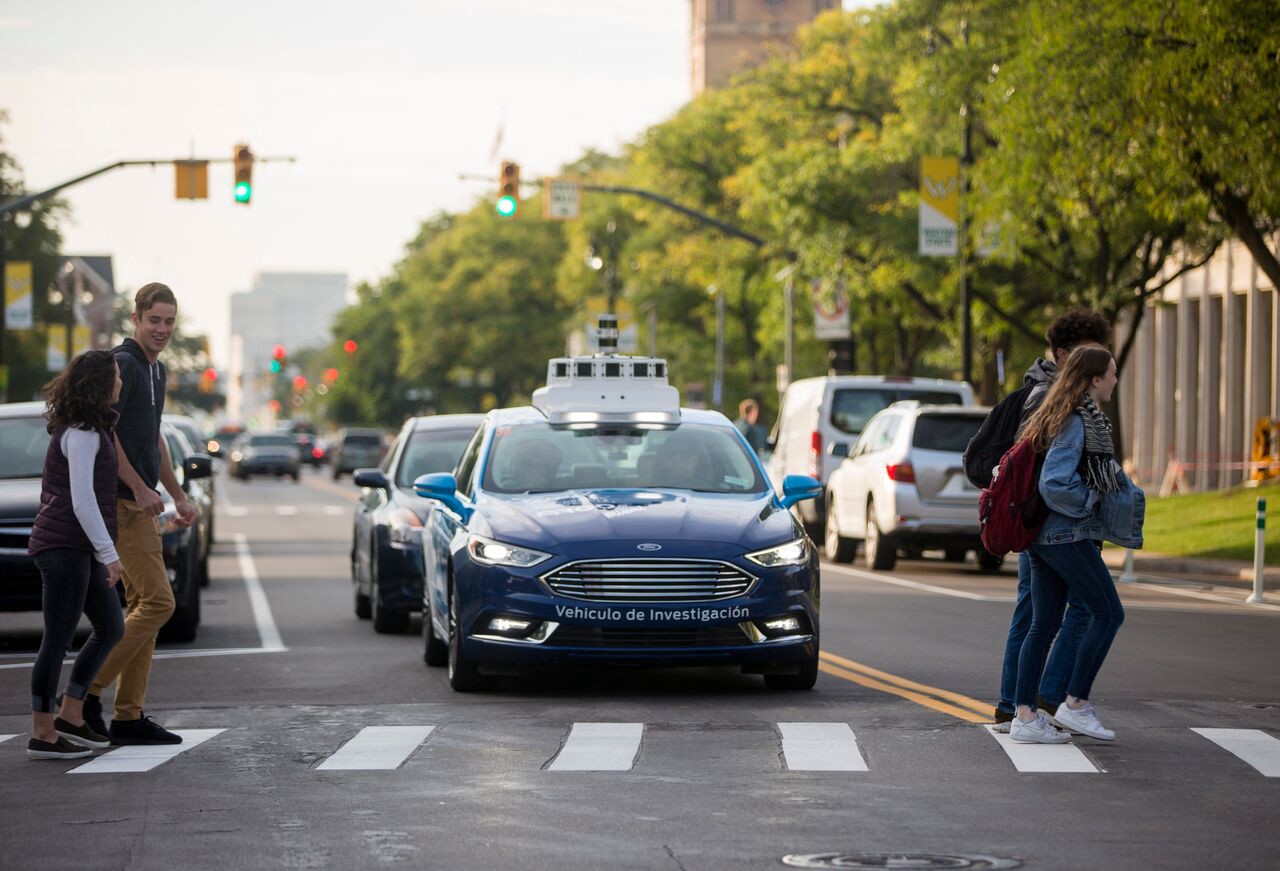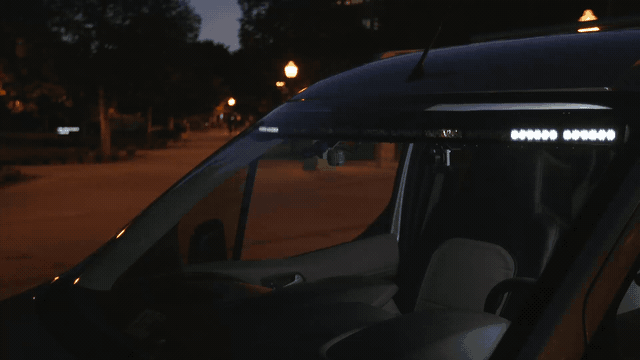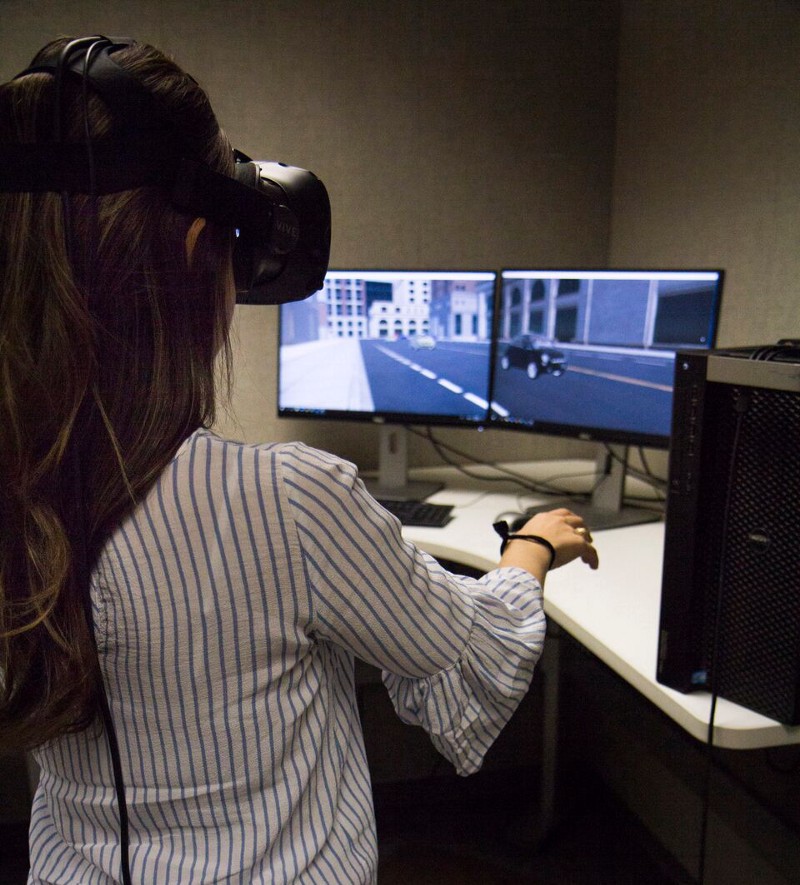See the Light: Our Call for Standardization of the Protocol for Messaging between Robo Mobiles
- Transfer

The light display above the windshield, developed by Ford, uses three kinds of different light signals, indicating that the car is giving way, is in active control mode, or is preparing to accelerate from a standstill.
There is a tendency towards concentrating mainly on the users who will drive in the development and deployment of romo mobiles. We at Ford are working to win the confidence of all road users, including all people using roads and all communities on whose territory robobom will work. For this technology to be successful, it is crucial to integrate it into society so that everyone is confident in how it works, what will serve the people as well as enterprises.
The idea that pedestrians, cyclists and scooter drivers will have to change their behavior in order to adapt to robotic vehicles is diametrically opposed to our idea of how to integrate our technology. Therefore, we are working hard to develop an interface that, in our opinion, will help robo-mobiles to integrate seamlessly into collaboration with other road users.
Today, we call on all roboMab developers, automakers, and techno companies to embed autonomous 4th level devices — and believe that these devices need to communicate their intentions — to join us and share ideas on how to create an industry standard for reporting on such intentions, how to drive, make way or accelerate from a stop. The work we have done is available to everyone else in the form of a memorandum of understanding, created to make it easier for all of us to work.
Why is this approach the best? We want everyone to be able to trust robo-mobiles - it doesn't matter if they are passengers of these cars, pedestrians, cyclists, scooter drivers or other drivers on the road. Developing a single, universal interface that is understandable to all people in all countries and all age groups will be critically important for the successful implementation of robotic technology.
Check robo interface with a demonstration of intentions
Last year, we worked with the Virginia Transport Institute (VTTI) on an experiment with what we called a robotic interface with a demonstration of intentions - it was a light panel mounted directly above the windshield of a Ford Transit Connect wagon. We took this step after the initial development and tests in virtual reality, which confirmed that the signal circuits we developed are easy to learn.
The VTTI team has developed a suit in the form of a seat, hiding the real driver to simulate a self-moving van, and determine whether the light board successfully transmits its intentions. We experienced three different light scenarios, as well as a control condition in which the light was completely turned off, in order to observe how pedestrians and other road users react to a car indicating their intentions.

Give way: running from side to side lights, indicating that the car is going to stop.
Active driving mode: continuously lit lights, indicating that the car is going to continue to go at the same speed and in the same direction (while remaining able to respond to objects and other road users accordingly).
Start of motion: fast flashing lights indicating that the car is starting to move.
We equipped Transit Connect with several cameras, which allowed us to watch many hours of video, where people's reaction to various signals indicating the actions of a car traveling over 3000 km was recorded. The VTTI team compiled a catalog of all videos and found that the light signals did not provoke any unsafe behavior on the part of traffic participants. The results prove the existence of a baseline, and that we have the potential to improve the acceptance of rob-mobiles and the belief in technology.
Then we conducted another study in virtual reality in order to experience the level of trust and acceptance to which we arrived at as a result of the previous experiment. We placed the test subjects at the corner of the digital world street to observe and measure their response to a complex mixture of cars crossing the intersection, some of which were equipped with an interface with a demonstration of intentions, and some not. We found that without any instructions about what the different signals mean, the subjects after two meetings with this interface already had an idea of what one of the three signals meant, and after 5-10 meetings they already understood what all three beeps.

We were also encouraged by the fact that the signals influenced people's confidence in the roaming mobiles in a positive way, and the subjects told us that the light signals improved their understanding of what the mobile was about to do.
What's next
Now we are ready to transfer the knowledge acquired in the virtual world back into reality. We set up an interface with a demonstration of intentions on a small fleet of our Fusion Hybrid based robo mobiles to be used in Miami-Dade County under the control of Argo AI. Tests will continue there so that pedestrians and other participants in the movement can meet with light boards, and we can observe their reaction.
We also conduct research in Europe to understand how the same signals are perceived there, to ensure that these signals are equally perceived in all regions and cultures.

In addition to the proposal to accelerate the process of joint work on standardization, we continue to work in parallel with the International Organization for Standardization (ISO) andCommunity of Automotive Engineers (SAE) on the creation of a unified communication interface between roaming mobiles. Our goal is to reach agreement in three key areas: the location of the signals on the car, the pattern of signals and their color. To help all organizations interested in working together, we are ready to share the scenarios developed for our virtual tests, and we have already done this with several universities and other companies.
We naturally understand that some aspects of the current design may need to be changed, and we are open to work on these changes together and find the best interface solution. It is critically important that the method by which we all get together is perceived as well as brake lights or turn signals.
After all, in the end, for successful integration of rob-mobiles into society, it is necessary that they do not confuse anyone and seem incomprehensible. Therefore, we have only one request: let's work together to achieve this goal.
